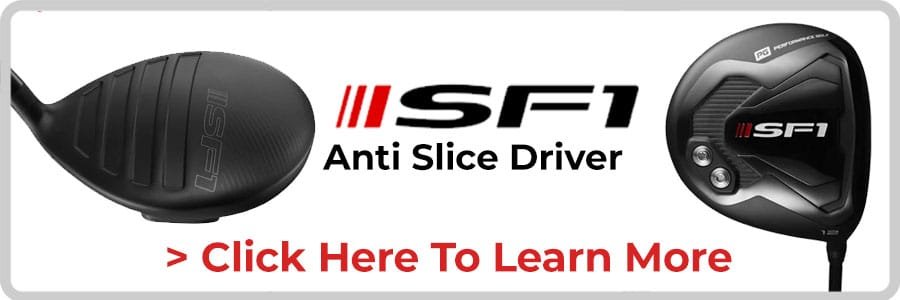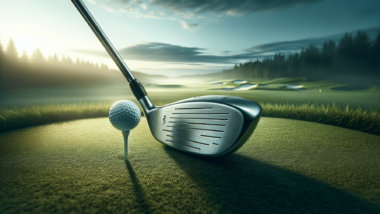Have you ever felt frustrated watching your golf ball veer off to the right when you just wanted it to go straight? You’re not alone. Many golfers struggle with slicing their drives, and while it can feel like a complex issue, one of the key factors to address is how to grip a driver not to slice.
Understanding the Slice
Before we get into how to grip your driver to avoid a slice, it’s important to understand what a slice actually is. A slice occurs when the ball spins in a way that causes it to curve dramatically to the right for a right-handed golfer (and to the left for a left-handed golfer). Often, this spin is a result of the face of the club being open at impact.
Why Your Grip Matters
Your grip is the first point of contact with the club, and it plays a crucial role in determining the direction of your shot. An improper grip can lead to the clubface being in a poor position at impact, thereby increasing the chances of slicing the ball.
By focusing on your grip, you can make significant improvements to your game. Let’s break down how you can master the grip on your driver.
The Basics of Grip
Types of Grips
There are three primary grip styles you can use: the overlapping grip, the interlocking grip, and the baseball grip.
- Overlapping Grip: This involves placing the pinky finger of your trailing hand over the index finger of your lead hand. Many professionals prefer this grip as it allows for better control and connection between the hands.
- Interlocking Grip: Here, you intertwine the pinky of your trailing hand and the index finger of your lead hand. This grip is popular with those who have smaller hands and can provide a snug fit.
- Baseball Grip: This grip keeps all ten fingers on the club, much like how you would hold a baseball bat. It can be more comfortable for beginners or those with less hand strength.
No matter which grip you choose, it’s essential to ensure that it feels comfortable and secure.
Grip Pressure
The pressure you use when gripping the club is equally important. If you grip too tightly, you’ll tense up, making it hard to create a fluid swing. Conversely, if you grip too loosely, you’ll lack control.
Aim for a light grip pressure, around a 5 or 6 on a scale of 1 to 10. This balance allows for fluid movement while maintaining control of the club.
How to Grip Your Driver to Prevent Slicing
Step-by-Step Guide to the Ideal Grip
- Position Your Hands: Start by placing your lead hand (left hand for right-handed golfers) on the club. Your thumb should run straight down the grip, and you should see two or three knuckles of your hand when looking down.
- Add the Trailing Hand: Next, place your trailing hand (right hand for right-handed golfers) on the grip. The pad of your palm should cover the thumb of your lead hand. Either the overlapping or interlocking grip can be applied here based on your preference.
- Check the V’s: Ensure that the thumbs of both hands point toward your right shoulder (for right-handed players). This creates “V’s” with your thumbs and arms that should be directed towards your shoulder.
- Find the Comfortable Pressure: As mentioned, maintain a grip pressure that feels snug but relaxed. Too much tension in your hands can lead to tension in your arms and shoulders, impacting your swing.
A Quick Table for Reference
| Grip Type | Description | Best For |
|---|---|---|
| Overlapping | Pinky overlaps index finger of the lead hand | Most professionals |
| Interlocking | Pinky intertwines with index finger of the lead hand | Smaller hands |
| Baseball | All ten fingers touch the grip | Beginners |
Additional Tips for a Better Grip
Check Your Alignment
Apart from grip, your overall body alignment impacts the direction of your shot. Your body should align parallel to your target line. When your alignment is off, even a perfectly gripped driver may not fly straight.
Practice Grip Drills
Focusing on your grip can help solidify correct technique. Here are a couple of effective drills:
- Knuckle Drill: Place the club on the ground, and swing it back and forth while maintaining your grip. This allows you to feel comfortable with your hand positioning.
- One-Handed Swings: Practice hitting balls using just your lead hand and then your trailing hand. It helps strengthen your grip and promotes better hand-eye coordination.
Consider Your Equipment
Sometimes, the equipment can also play a role in slicing. The driver you use should feel comfortable in your hands and suit your swing style. If your club is too stiff or too flexible, it might affect how you can control the ball.
Understanding Clubface Angle
Role of the Clubface
The angle of your clubface at impact significantly influences the direction of your ball. If it’s open (pointing to the right for a right-handed golfer), it can contribute to a slice.
Impact of Grip on Clubface Angle
Your grip affects the clubface angle. An overly weak grip (where your hands are rotated too far to the left for a right-handed player) could result in an open clubface. A stronger grip (where your hands are rotated to the right) can help close the clubface at impact, reducing the chances of slicing. Finding the right balance is key.
Swing Path and its Impact
What is Swing Path?
Your swing path refers to the direction in which the clubhead travels during your swing. If your clubhead moves from outside to in, it can create sidespin leading to a slice.
Training Your Swing Path
- Consider using alignment sticks during practice to guide your swing path. Place one along your feet and another where you want your clubhead to go.
- You can also try the “inside-out” drill, where you focus on swinging the clubhead slightly inside your line at the start of the downswing.
Conclusion
If you’re struggling with slicing your drives, focusing on your grip can help you gain more control over your shots. Remember to find a grip type that suits you, apply the right pressure, and ensure your body and swing path are aligned for optimal performance.
With practice, patience, and adjustments to your grip and technique, you’ll soon see improvements in your drives. Keep swinging, and enjoy the game!






